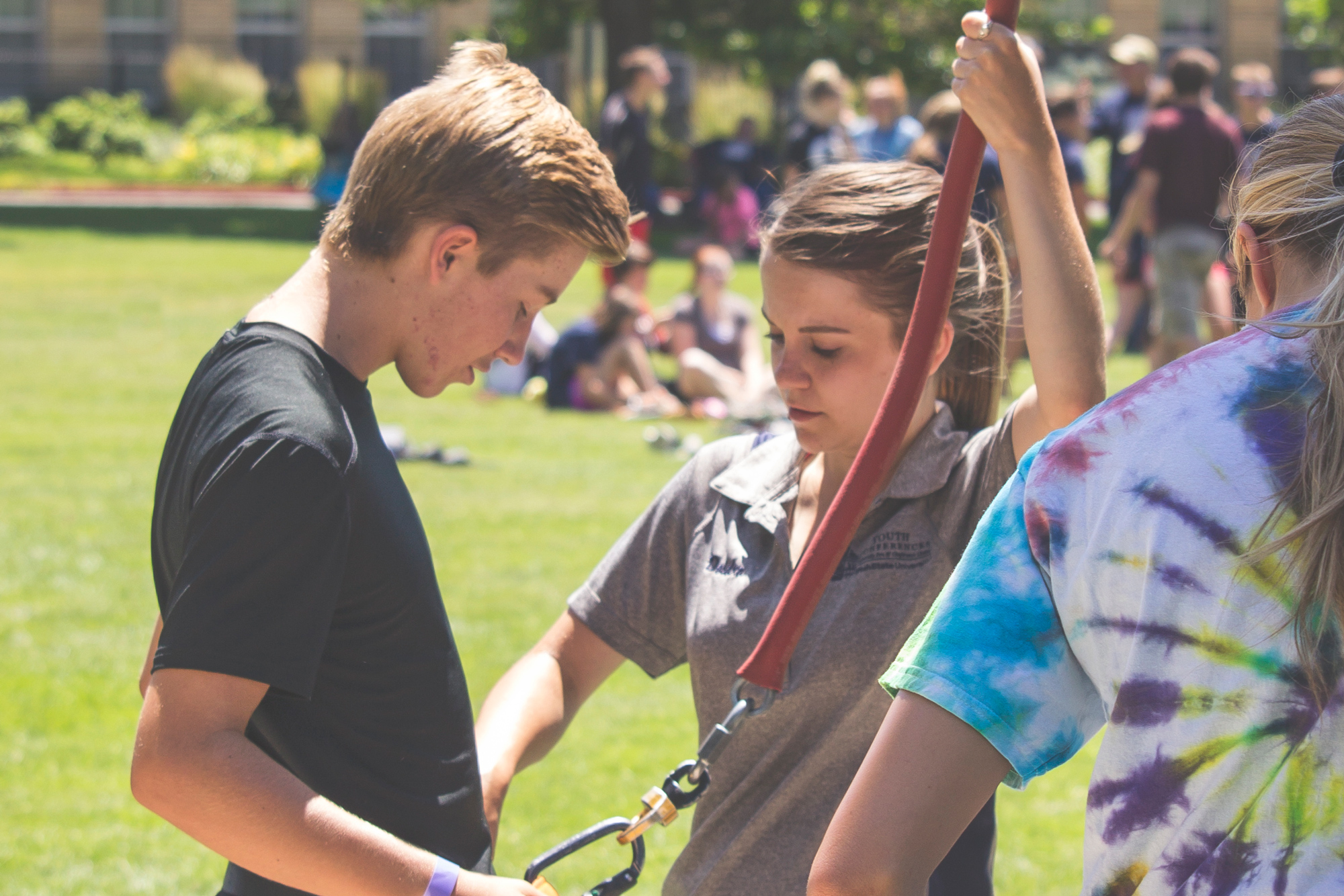USU Youth Program Employees and Volunteers
Background Checks
Any adults working with minors are required to have a background check. The background check can be done through any vendor of your choice, but must meet standards approved by the University, which shall include utilizing both a national criminal history database and sex offender registry database.
USU Police does not provide background checks; however, they do provide fingerprinting services associated with background checks. For more information, visit the Utah Bureau of Criminal Identification website.
More Information on USU Fingerprinting
Mandatory Training
Any adults working with minors are required to receive training on the protection of minors, code of conduct, and reporting obligations before they begin work for a USU sponsored program. Additionally, adults employees and volunteers must complete USU sexual harassment prevention and driver's training.
Enroll Here
- USU Driver Registration
- Mini Bus Training
- Mini Bus Schedule Contact: Dave Compton 435-797-3470 or dave.compton@usu.edu
- Golf Cart Training and Handout (Link for handout)
- Golf Cart Contact: Kirt Poulsen 435-797-3507 or 435-770-1306
- P-card Holder and Delegated User Training
Code of Conduct
A written document (policy) that defines which behaviors by the following groups of people are prohibited. The Code of Conduct should be signed by the individual acknowledging that any violation can result in disciplinary action including termination.
- All Employees
- Contractors
- Volunteers
- Anyone who comes in contract with children
Most codes of conduct contain a wide range of common sense topics, such as:
- Not developing personal friendships with students
- Bathroom and locker room monitors should be of the same gender as the children using them. At least two educators should be present if it is necessary to assist a child with activities such as diapering, putting on bathing suits, and taking showers.
- Do not schedule meetings or practices with children after regular school hours or established times for athletic and co-curricular activities. Do not meet with children outside of school-sponsored or approved programs. At least two chaperones (preferable male and female) should accompany students during trips away from school.
- Employees should not use personal vehicles to transport children. Use institution-provided vehicles whenever possible, and more than one adult should be present. If a personal vehicle is used to transport children, permissions and consent forms signed by the children’s parents should be required.
- Do not develop personal friendships or share any private or intimate information with a child. Do not invite children to your home. Avoid spending time alone with children in their homes. When serving as mentor or tutor, make sure that parents or other adults are present.
- You should respond to child behavioral issues in an age-appropriate manner. Responses may include redirection, positive reinforcement, and encouragement.
- You should physically restrain a child only in predetermined situations, such as when necessary to protect a child or other children from harm. All incidents of physical restraint should be reported to supervisors and documented.
- In general, touching to express compassion or give encouragement should be open, not secretive and conducted in response to the child’s needs, not those of the adult. Any resistance from the child should be respected. A child’s breasts, buttocks, and groin area should never be touched, except for purposes such as diapering or health emergencies.
- Acceptable usage of electronic devices and social media
- Staff should not communicate with students via email, text messages, social networking sites, or other methods at any time except when there is a clear educational purpose and the communication is consistent with the mission and policies of the school.
- Do not give (or receive) excessive gifts to children and their families. Many schools prohibit gifts more than $10 to $25.
Child to Adult Ratio
| Age Range | # of Adults | # of Children | Overnight Children |
| 0-5 years | 1 | 6 | 5 |
| 6-8 years | 1 | 8 | 6 |
| 9-14 years | 1 | 10 | 8 |
| 15-18 years | 1 | 12 | 10 |
USU Emergency Plan
- Emergency Action Plan (EAP) Template - link
- USU Emergency Procedures Brochure
- Code Blue Enrollment
-
USU issues campus alerts when there is a significant emergency, an ongoing threat of certain crimes on campus, or a safety concern from weather or off-campus incidents. USU Public Safety follows a decision matrix to determine which alert is sent to the university community. All alerts are sent through USU's campus alert system, and all members of the campus community should keep their notification settings in myid.usu.edu updated.
-
- USU Emergency Management
Contact Us
Utah State University Risk Management
Phone: 435-797-1951
Email: risk@usu.edu
Mailing Address:
6600 Old Main Hill
Logan, UT 84322






